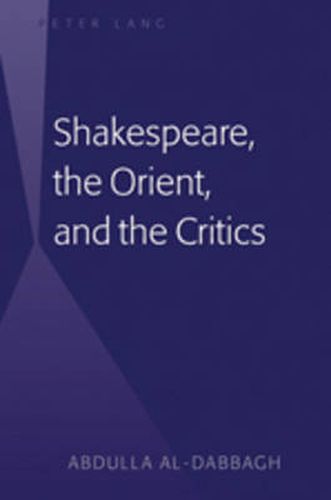Readings Newsletter
Become a Readings Member to make your shopping experience even easier.
Sign in or sign up for free!
You’re not far away from qualifying for FREE standard shipping within Australia
You’ve qualified for FREE standard shipping within Australia
The cart is loading…






This title is printed to order. This book may have been self-published. If so, we cannot guarantee the quality of the content. In the main most books will have gone through the editing process however some may not. We therefore suggest that you be aware of this before ordering this book. If in doubt check either the author or publisher’s details as we are unable to accept any returns unless they are faulty. Please contact us if you have any questions.
Previous criticism has not adequately discussed oriental aspects of the content of Shakespearean drama. In addition to his portrayal of oriental figures (such as Cleopatra, Othello, and Shylock) and his use of literary genres and motifs that have roots in oriental tradition (such as that of the tragic romance in Romeo and Juliet, there are certain key elements in Shakespeare’s thought and outlook that can only be properly understood within the larger contribution of the oriental legacy. This legacy has clear relevance not only to the exemplary fate of the lovers in Romeo and Juliet, but also to the destinies of such major Shakespearean heroes as Hamlet and Lear. Shakespeare, the Orient, and the Critics investigates the boundaries of oriental framework within works such as Hamlet, King Lear, and The Tempest. Stylistically, at the heart of Shakespeare’s orientalism are two long-recognized features of his dramatic art: his predilection for reversing stereotypes and his sympathy and identification with the alien and the other. This can be most clearly seen in the love tragedies of Othello and Anthony and Cleopatra as well as the romantic comedy of The Merchant of Venice. Ultimately, the philosophic underpinning of such works is a special expression of Renaissance humanism that transcends the boundaries of class, race, and culture.
$9.00 standard shipping within Australia
FREE standard shipping within Australia for orders over $100.00
Express & International shipping calculated at checkout
This title is printed to order. This book may have been self-published. If so, we cannot guarantee the quality of the content. In the main most books will have gone through the editing process however some may not. We therefore suggest that you be aware of this before ordering this book. If in doubt check either the author or publisher’s details as we are unable to accept any returns unless they are faulty. Please contact us if you have any questions.
Previous criticism has not adequately discussed oriental aspects of the content of Shakespearean drama. In addition to his portrayal of oriental figures (such as Cleopatra, Othello, and Shylock) and his use of literary genres and motifs that have roots in oriental tradition (such as that of the tragic romance in Romeo and Juliet, there are certain key elements in Shakespeare’s thought and outlook that can only be properly understood within the larger contribution of the oriental legacy. This legacy has clear relevance not only to the exemplary fate of the lovers in Romeo and Juliet, but also to the destinies of such major Shakespearean heroes as Hamlet and Lear. Shakespeare, the Orient, and the Critics investigates the boundaries of oriental framework within works such as Hamlet, King Lear, and The Tempest. Stylistically, at the heart of Shakespeare’s orientalism are two long-recognized features of his dramatic art: his predilection for reversing stereotypes and his sympathy and identification with the alien and the other. This can be most clearly seen in the love tragedies of Othello and Anthony and Cleopatra as well as the romantic comedy of The Merchant of Venice. Ultimately, the philosophic underpinning of such works is a special expression of Renaissance humanism that transcends the boundaries of class, race, and culture.